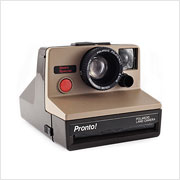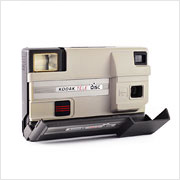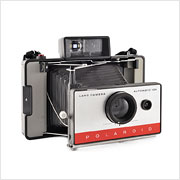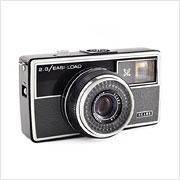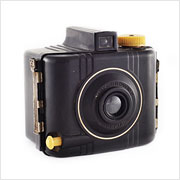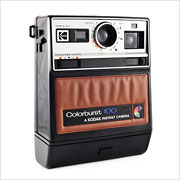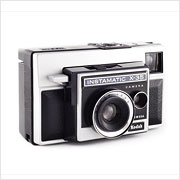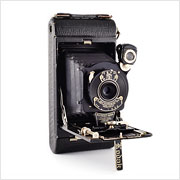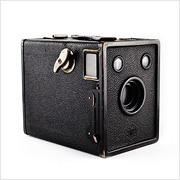Polaroid Pronto! Sears Special
The Polaroid Pronto! Sears Special was sold exclusively at Sears department stores and is a variant of the Pronto!, Polaroid’s first non-folding Land Camera to use SX-70 instant film. Polaroid’s earlier instant films required users to peel the negative away from the print which, unfortunately, caused many photogenic locations to become littered with discarded negatives, much to the chagrin of Polaroid founder Edwin Land. Land addressed this concern by developing SX-70 film, which did not use separate negatives and therefore produced no excess waste with each exposure.

